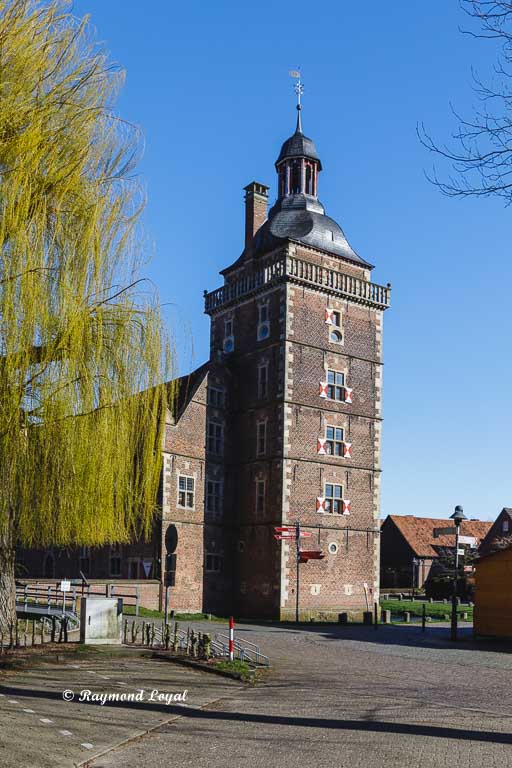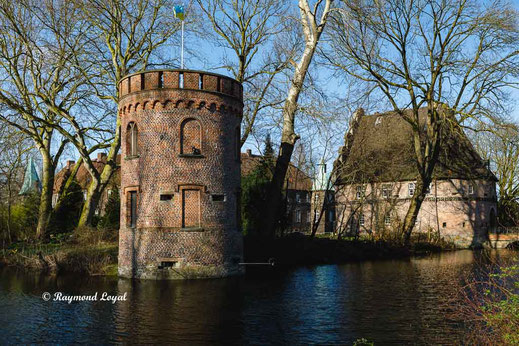Palaces and Castles in North Rhine Westphalia (NRW)
Welcome to our blog on palaces, castles and palatial gardens in the German state of North Rhine Westphalia. You will find editorials and image galleries on places of interest. North Rhine Westphalia is abundant with noble places of which quite a number are open to the public. Virtual tours will guide around the places to give you an idea what the visitor can expect.
Palaces were either built from scratch as buildings of great splendour or, especially during the transitional period from the late Middle Ages to Renaissance, existing castles underwent re-construction into renaissance buildings. As for the latter, castles were the basic structure on which new splendour could be created. Mostly, these baroque palaces were residential seats for nobility or the sovereign. In Italy the period of Renaissance began as early as 1420 and lastet into the second half of the 16th century.
Each epoch creates its own style. With Renaissance coming to an end there is a fluent transition into baroque as the new style of the nobility. We find baroque in palaces and churches in equal measure. As was the case with Renaissance, Baroque is started in Italy first from 1570 and is going to last in Europe into the 18th century.
The Rococo is the advancement of Baroque which during that time is also called Late Baroque, with the heydays between 1725 and 1780. Rococo has its roots in France and its main feature are dainty ornaments. The Rococo is the expression of the aristocratic culture of France, derived from the French court, with the exalted example of the King's palace of Versailles which is going to prompt European courts to imitate the French court as good as possible, or as far as the royal coffers would allow for.

Raesfeld Castle
We find the water castle of Raesfeld in the same-named village of Raesfeld. Water castle Raesfeld belongs to the most beautiful castles in the entire Muensterland region.
The early beginnings of Raesfeld go back to the 12th century when the knights of Raesfeld were Lord of the manor. Though, the original castle no longer exists.
In 1685 the right of property went to the Lords of Velen. It was this family that decided to rebuild the castle into a renaissance castle. The majority of the renaissance castle was preserved into our time.
When the familiy died out in 1733 the property went to the Counts of Limburg-Styrum, who did not care much about the castle and left it to become derelict.
Under the Velen family a garden and an animal enclosure were set out near the castle. Since 1849 the garden no longer exists, as the area was turned into farmland. The animal enclosure was newly set up in 2003 and is open to the public.
Nowadays, the castle belongs to the chamber of trade and was restored to new splendour in the 1980s. However, from the main castle only the western and nothern wings still exist and the donjon.
Moyland Castle
Castle Moyland is a water castle in the rural district of Kleve in Northrine-Westfalia. The castle was built in the neo-gothic style, as a four-wing complex with a donjon at the south-east corner of the building and a horseshoe-shaped tower on each corner. The horseshoe-shaped towers do have three storeys.
Acces is over a solid bridge. The door is flanked by small polygonal towers with pointed roofs.
The castle lies at the centre of a large park. The restauration of the park happened between 1995 and 1997 while including the valuable tree population of the park. Nowadays, the parks matches the park situation in the late 19th and early 20th century.
Castle Moyland was sold to the Prussian King Frederic I at the end of the 17th century who used the place for hunting reasons. Frederic II. use Moyland to meet Voltair in 1740. For services rendered to the Prussian King during the Seven Year's War, the castle was given to the Dutch familiy Steengracht, who hold the castle as their property until the 1990s.
Picture Gallery Castle Moyland
Bladenhorst Castle
Castle Bladenhorst lies on the territory of the city of Castrop-Rauxel in Northrine-Westfalia and can look back on over 750 years of history. Castle Bladenhorst belongs to the most important water castles in the wider Muensterland area.
In the current state the castle is building of the late renaissance era and consits of three wings. The castle complex is situated within a moat system and is separated from the outside areas. The castle is privately owned.
Castle Vischering
Water Castle Vischering is situated in the Muensterland area of Northrhine-Westfalia belongs to the rural district of Coesfeld. The castle was first built in the second half of the 13th century on behalf of the Bishop of Muenster.
In 1529 the original building fell victim to a huge fire which almost completely destroyed the building complex. A restoration of the castle was done on the remnants of the foundation walls.Though restauration lasted for over 20 years. The west wing of the castle was rebuilt in the renaissance style. Work on the brickwork was only completed in 1552.
The castle withstood all adversities, even occupation during the Thirty Years War did not inflict any damage on the castle. Only Allied bombing in 1944 inflicted heavy damage to the castle.
Nowadays, the castle complex is a popular tourist attraction and, what else, the castle is one of the most popular motives for photographers.
The outbuildings are open to the public 24/7, meaning photographers can start their work as early as possible. A large car park is available for visitors in ony a few minutes-walk-distance.





























